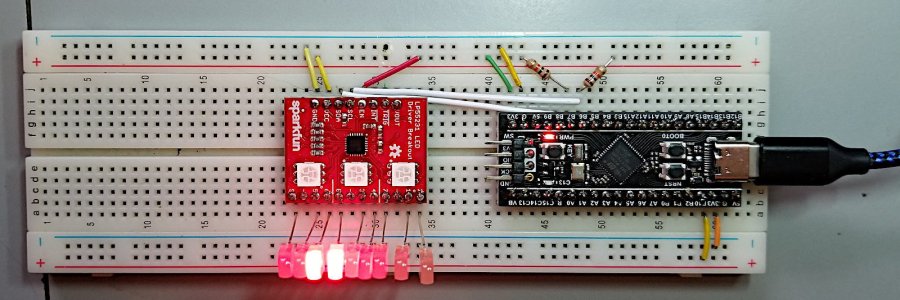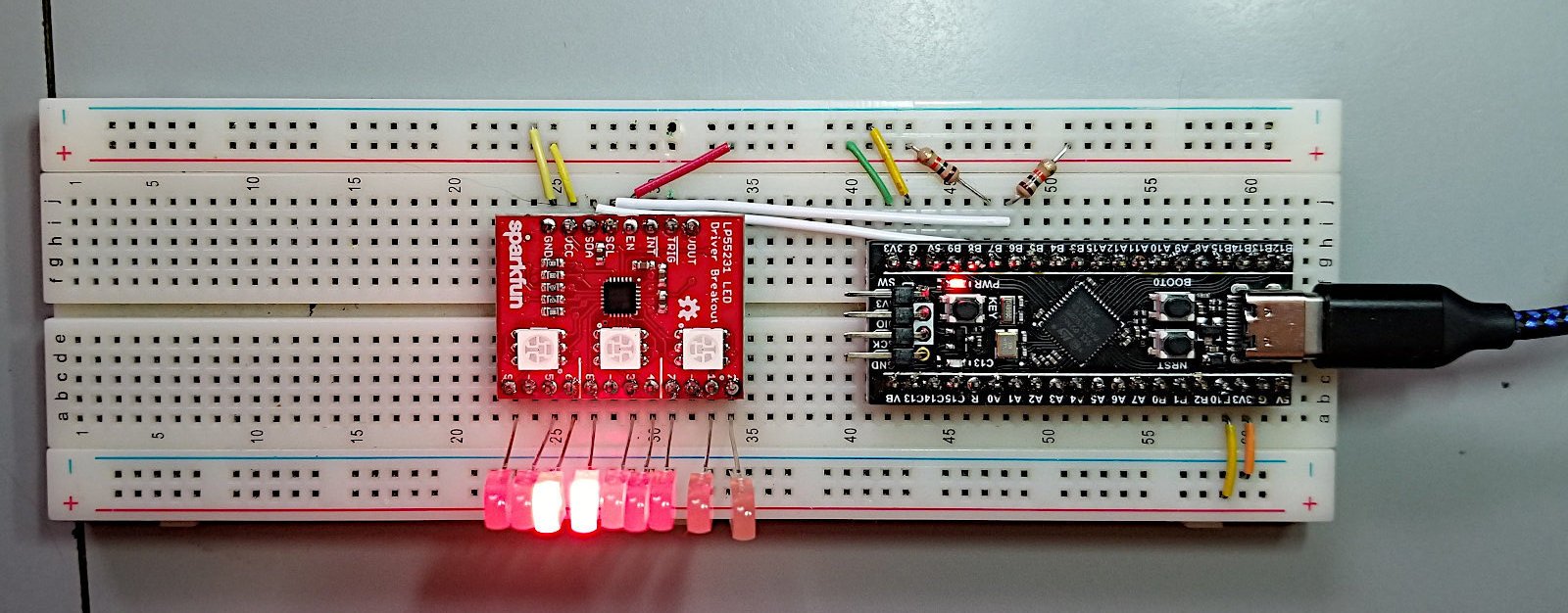On my last post I had barely scratched the surface of what the LP55231 could do and was reading about the three program execution engines. After a bit of research I found that TI supplies a dashboard program and an assembler for the chip, but only for their own LP55231SQEVM evaluation board.
The assembler may work without the EVM, but both programs are windows-only anyway. That means I've instantly lost interest, as I'm a Linux guy. The dashboard runs with Wine, but I don't have their board, so that's a moot point. I didn't even try to get the assembler to work. Chances are fairly good that it would work with Wine, but I don't care to work that hard. Anyways, LP55231 programs can only be 96 instructions at most, so hand assembling is pretty simple.
I don't care for using other people's driver libraries to control things. You don't learn anything that way. But I'm certainly not above having a look at their driver source if I get stuck. I did have a look at Sparkfun's code this time, but didn't learn anything except that I had made a typo setting one register. Fixed that bug and then it worked.
Now that I can program the chip and load Sparkfun's demo program onto it I think I'll write a few of my own. What fun!
Here's a MicroPython demo of writing a program to the chip. The program I'm writing is Sparkfun's example with changes to mapping to suit my setup:
# ghmicro.com
# LP55231 LED driver - hardware I2c
import time
from machine import I2C, Pin
i2c = machine.I2C(1,freq=400000)
progpage1 = [0x9c,0x10, #00 map start
0x9c,0x9f, #01 map end
0x06,0xff, #02 ramp up
0x02,0x00, #03 wait
0x07,0xff, #04 ramp down
0x9d,0x80, #05 map next
0xa0,0x02, #06 loop to 2
0x00,0x0a, #07 - empty placeholder
0x00,0x05, #08 - empty placeholder
0x00,0x0a, #09 - empty placeholder
0x00,0x05, #0a - empty placeholder
0x00,0x0a, #0b - empty placeholder
0x00,0x05, #0c - empty placeholder
0x00,0x0a, #0d - empty placeholder
0x00,0x05, #0e - empty placeholder
0x00,0x0a] #0f - empty placeholder
progpage2 = [0x00,0x02, #10 map begin - start of 2nd page
0x00,0x01, #11
0x00,0x40, #12
0x00,0x08, #13
0x00,0x04, #14
0x00,0x80, #15
0x00,0x20, #16
0x00,0x10, #17
0x01,0x00, #18
0x00,0x10, #19
0x00,0x20, #1a
0x00,0x80, #1b
0x00,0x04, #1c
0x00,0x08, #1d
0x00,0x40, #1e
0x00,0x01] #1f map end
progarray1 = bytearray(progpage1)
progarray2 = bytearray(progpage2)
byt = bytearray(2)
def writepair(address,value):
byt[0] = address
byt[1] = value
i2c.writeto(0x32,byt)
writepair(0x00,0x40) #enable lp55231
pyb.delay(10) #wait to enter normal mode
writepair(0x36,0x7f) #powersave on, auto charge pump, internal clock, auto increment
writepair(0x01,0x00) #set all engines to disabled
writepair(0x01,0x10) #set engine 1 to load mode
pyb.delay(1) #wait 1ms for initialization
writepair(0x4f,0x00) #select memory page 0
i2c.writeto_mem(0x32,0x50,progarray1) #write program to memory
writepair(0x4f,0x01) #select memory page 1
i2c.writeto_mem(0x32,0x50,progarray2) #write program to memory
writepair(0x01,0x20) #set engine 1 to run mode
writepair(0x00,0x60) #set prog exec from hold to run

